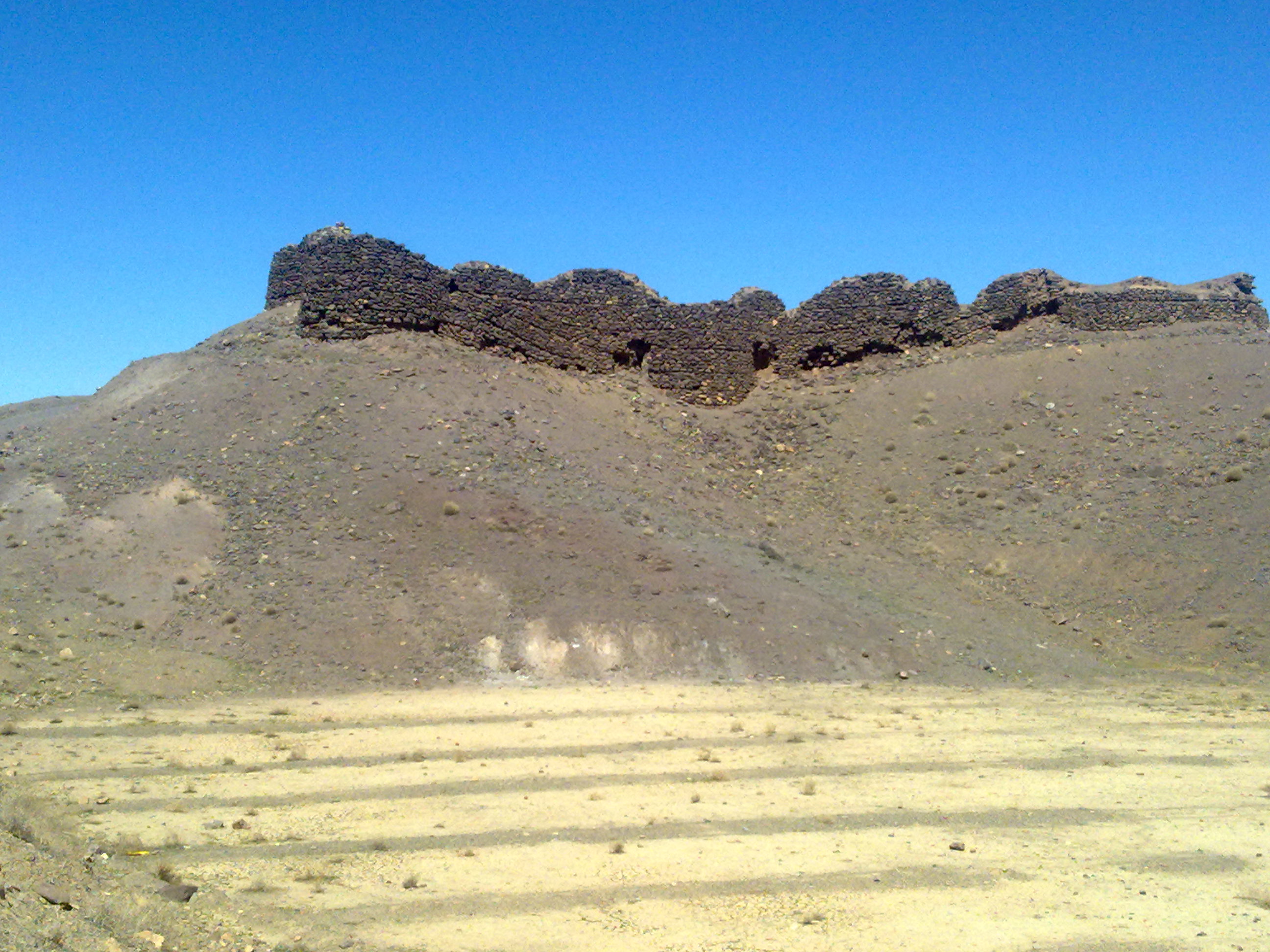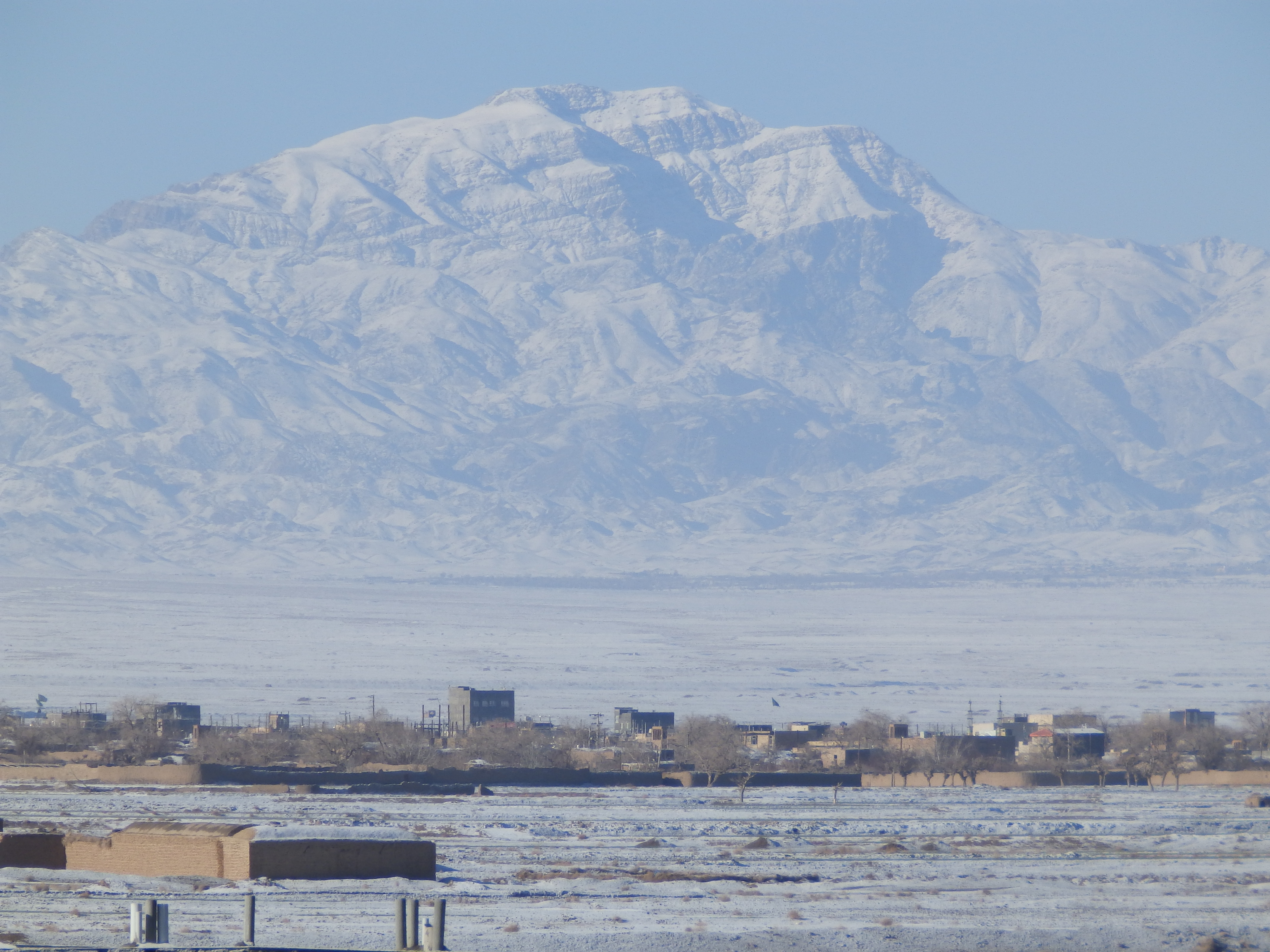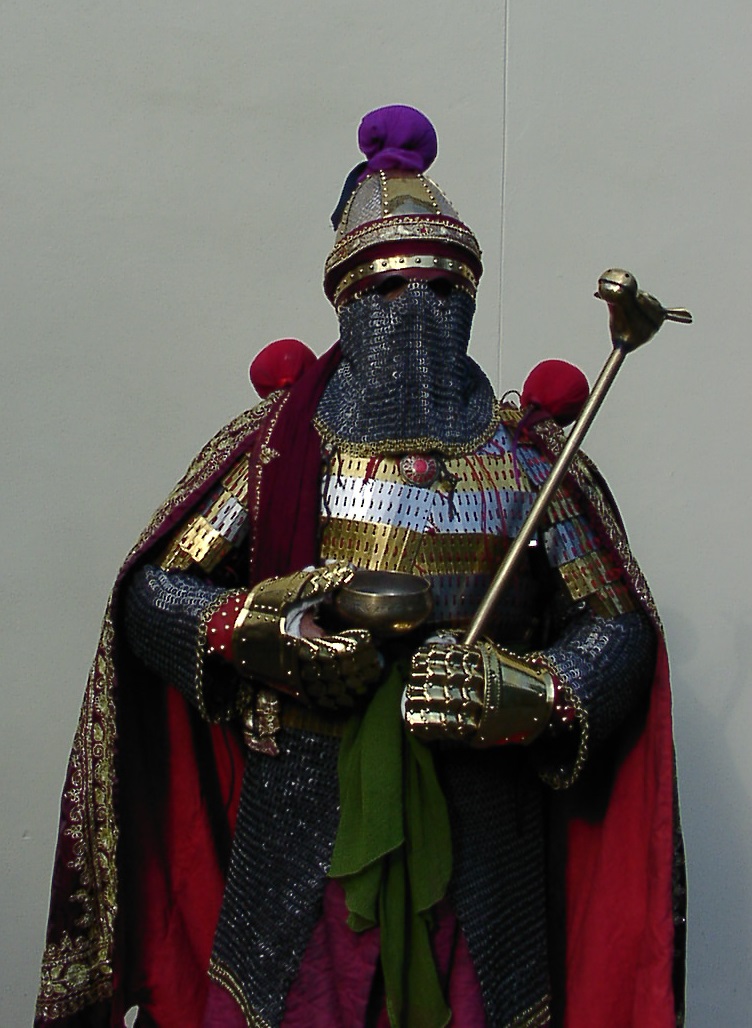|
Zibad Castle
Zibad Castle is one of the four historical monuments of Zibad, Iran, located in the Kakhk district of Gonabad County, in the Razavi Khorasan Province. It is believed to be the last refuge of Yazdegerd III, whose death signaled the collapse of the Sasanian Empire and the conquest of pre-Islamic Iran. In 2001, the castle was registered as a national heritage property. Zibad Castle has also been nationally registered under the name of Shahab Castle since 2002. Last shelter of the last Sasanian emperor In 651, Yazdegerd III was defeated by the Muslim Arabs in the city of Gonabad in the province of Merv. His heavy Sasanian cavalry was too sluggish and systematized to contain them; if he had employed lightly-armed Arab or East Iranian mercenaries from Khorasan and Transoxiana he would have been much more successful. Shortly after this, Yazdegerd III was murdered, leaving several different and contradictory narratives about his death. One source reports he sought refuge with ... [...More Info...] [...Related Items...] OR: [Wikipedia] [Google] [Baidu] |
Gonabad
Gonabad ( fa, گناباد , also Romanized as Gonābād; also known as Gūnābād; formerly Janābaz) is a city and capital of Gonabad County, in Razavi Khorasan Province, Iran. At the 2011 census, its population was 36,367, in 10,389 families. It is mostly well known because of the Gonabadi Dervishes and for its qanats, also known as kareez. It is one of the most important producers of saffron in Iran. Other agricultural products include: Grape, Pistachio and pomegranate. The shrine the Ni'matullāhī Gonabadi Sufism, dervish order is located in Beydokht, a village in the Gonabad county. History The famous ancient war of Davazdah Rokh had happened between Iran and Turan (Central Asia) in this city on the Zibad Castle. The construction of this city is attributed to the Achaemenid Empire, Achaemenid kings and during the Seljuk Empire and Khwarazmian dynasty periods (fifth to seventh centuries AH) it was Shahrabadi. Geography and weather conditions The city of Gonabad is loca ... [...More Info...] [...Related Items...] OR: [Wikipedia] [Google] [Baidu] |
Kitab Futuh Al-Buldan
''Futūh al-Buldān'' ( ar, فتوح البلدان, , Conquest of (the) countries), or ''Kitāb Futūḥ al-Buldān''("Book of the Conquest of the Countries/Lands"), is the best known work by the 9th century Arab or Persian historian Ahmad Ibn Yahya al-Baladhuri of Abbasid-era Baghdad. Written in Arabic, the ''Kitāb Futūḥ al-Buldān'' is a digest of a larger lost work of geographical history of the Caliphate empire, the political histories and events leading to the inclusion of the locations within it, including accounts of the early conquests of the Islamic prophet Muhammad and the early caliphs'. Al-Baladhuri travelled widely in regions of northern Syria and Mesopotamia, collecting traditions for material to include in his book. He also translated some Persian texts into Arabic. Editions ''Futūḥ al-Buldān'' was edited by M. J. de Goeje as ''Liber expugnationis regionum'' (Leiden, 1870; Cairo, 1901). An English edition with the title "The Origins of the Islamic Sta ... [...More Info...] [...Related Items...] OR: [Wikipedia] [Google] [Baidu] |
Spahbed
''Spāhbed'' (also spelled ''spahbod'' and ''spahbad'') is a Middle Persian title meaning "army chief" used chiefly in the Sasanian Empire. Originally there was a single ''spāhbed'', called the , who functioned as the generalissimo of the Sasanian army. From the time of Khosrow I ( 531–579) on, the office was split in four, with a ''spāhbed'' for each of the cardinal directions.Gyselen (2004) After the Muslim conquest of Persia, the ''spāhbed'' of the East managed to retain his authority over the inaccessible mountainous region of Tabaristan on the southern shore of the Caspian Sea, where the title, often in its Islamic form ( fa, اسپهبذ; in ar, اصبهبذ ), survived as a regnal title until the Mongol conquests of the 13th century.Bosworth (1978), pp. 207–208 An equivalent title of Persian origin, '' ispahsālār or sipahsālār'', gained great currency across the Muslim world in the 10th–15th centuries. The title was also adopted by the Armenians ( hy, սպ� ... [...More Info...] [...Related Items...] OR: [Wikipedia] [Google] [Baidu] |
Khotan
Hotan (also known as Gosthana, Gaustana, Godana, Godaniya, Khotan, Hetian, Hotien) is a major oasis town in southwestern Xinjiang, an autonomous region in Western China. The city proper of Hotan broke off from the larger Hotan County to become an administrative area in its own right in August 1984. It is the seat of Hotan Prefecture. With a population of 408,900 (2018 census), Hotan is situated in the Tarim Basin some southwest of the regional capital, Ürümqi. It lies just north of the Kunlun Mountains, which are crossed by the Sanju, Hindutash and Ilchi passes. The town, located southeast of Yarkant County and populated almost exclusively by Uyghurs, is a minor agricultural center. An important station on the southern branch of the historic Silk Road, Hotan has always depended on two strong rivers—the Karakash River and the White Jade River to provide the water needed to survive on the southwestern edge of the vast Taklamakan Desert. The White Jade River still provides wa ... [...More Info...] [...Related Items...] OR: [Wikipedia] [Google] [Baidu] |
Al-Tha'ālibī
Al-Tha'alibi (961–1038), was a writer famous for his anthologies and collections of epigrams. As a writer of prose and verse in his own right, distinction between his and the work of others is sometimes lacking, as was the practice of writers of the time. Life Al-Thaʿālibī was born in Nishapur and was based there throughout his life. Of Arab ethnicity, his nickname means 'furrier' or 'tailor who works with fox fur', and medieval biographers speculated that this was his job or his father's, but there is no convincing evidence for either proposition. The only hint as to al-Thaʿālibī's education is that claim that he was taught by Abū Bakr al-Khwārizmi (who was certainly a source for al-Thaʿālibī's poetry anthologies). Likewise, despite his great proess, there are only hints that al-Thaʿālibī was himself a teacher. Al-Thaʿālibī travelled widely beyond Nishapur, however: autobiographical information scattered in his works shows that he spent time in Bukhārā ... [...More Info...] [...Related Items...] OR: [Wikipedia] [Google] [Baidu] |
History Of The Prophets And Kings
The ''History of the Prophets and Kings'' ( ar, تاريخ الرسل والملوك ''Tārīkh al-Rusul wa al-Mulūk''), more commonly known as ''Tarikh al-Tabari'' () or ''Tarikh-i Tabari'' or ''The History of al-Tabari '' ( fa, تاریخ طبری) is an Arabic-language historical chronicle completed by the Muslim historian Muhammad ibn Jarir al-Tabari (225–310 AH, 838–923 AD) in 915 AD. It begins with creation, and charts Muslim and Middle Eastern history from the myths and legends associated with the Old Testament through to the history of the Abbasid era, down to the year 915. An appendix or continuation, was written by Abu Abdullah b. Ahmad b. Ja'far al-Farghani, a student of al-Tabari. Editions Various editions of the Annals include: * An edition published under the editorship of M.J. de Goeje in three series comprising 13 volumes, with two extra volumes containing indices, introduction and glossary (Leiden, 1879–1901). * An edition published under the editorship o ... [...More Info...] [...Related Items...] OR: [Wikipedia] [Google] [Baidu] |
Greater Iran
Greater Iran ( fa, ایران بزرگ, translit=Irān-e Bozorg) refers to a region covering parts of Western Asia, Central Asia, South Asia, Xinjiang, and the Caucasus, where both Culture of Iran, Iranian culture and Iranian languages have had a significant presence and impact. Historically, this was a region long-ruled by the dynasties of various List of monarchs of Persia, Iranian empires, under whose rule the local populace incorporated considerable aspects of Persian culture through extensive inter-contact, or alternatively where sufficient Iranian peoples settled to still maintain communities who patronize their respective cultures; it roughly corresponds geographically to the Iranian plateau and its bordering plains. The Encyclopædia Iranica uses the term ''Iranian Cultural Continent'' to describe this region. In addition to the Iran, modern state of Iran, the term "Greater Iran" includes all of the territory ruled by various Iranian peoples throughout histor ... [...More Info...] [...Related Items...] OR: [Wikipedia] [Google] [Baidu] |
National Epic
A national epic is an epic poem or a literary work of epic scope which seeks or is believed to capture and express the essence or spirit of a particular nation—not necessarily a nation state, but at least an ethnic or linguistic group with aspirations to independence or autonomy. National epics frequently recount the origin of a nation, a part of its history, or a crucial event in the development of national identity such as other national symbols. History In medieval times Homer's ''Iliad'' was taken to be based on historical facts, and the Trojan War came to be considered as seminal in the genealogies of European monarchies. Virgil's ''Aeneid'' was taken to be the Roman equivalent of the ''Iliad'', starting from the Fall of Troy and leading up to the birth of the young Roman nation. According to the then prevailing conception of history, empires were born and died in organic succession and correspondences existed between the past and the present. Geoffrey of Monmouth ... [...More Info...] [...Related Items...] OR: [Wikipedia] [Google] [Baidu] |
Shahnameh
The ''Shahnameh'' or ''Shahnama'' ( fa, شاهنامه, Šāhnāme, lit=The Book of Kings, ) is a long epic poem written by the Persian poet Ferdowsi between c. 977 and 1010 CE and is the national epic of Greater Iran. Consisting of some 50,000 "distichs" or couplets (two-line verses), the ''Shahnameh'' is one of the world's longest epic poems. It tells mainly the mythical and to some extent the historical past of the Persian Empire from the creation of the world until the Muslim conquest in the seventh century. Iran, Azerbaijan, Afghanistan, Tajikistan and the greater region influenced by Persian culture such as Armenia, Dagestan, Georgia, Turkey, Turkmenistan and Uzbekistan celebrate this national epic. The work is of central importance in Persian culture and Persian language, regarded as a literary masterpiece, and definitive of the ethno-national cultural identity of Iran. It is also important to the contemporary adherents of Zoroastrianism, in that it traces the historical ... [...More Info...] [...Related Items...] OR: [Wikipedia] [Google] [Baidu] |
Turan
Turan ( ae, Tūiriiānəm, pal, Tūrān; fa, توران, Turân, , "The Land of Tur") is a historical region in Central Asia. The term is of Iranian origin and may refer to a particular prehistoric human settlement, a historic geographical region, or a culture. The original Turanians were an Iranian tribe of the Avestan age. Overview In ancient Iranian mythology, Tūr or Turaj (''Tuzh'' in Middle Persian) is the son of the emperor Fereydun. According to the account in the ''Shahnameh'', the nomadic tribes who inhabited these lands were ruled by Tūr. In that sense, the Turanians could be members of two Iranian peoples both descending from Fereydun, but with different geographical domains and often at war with each other. Turan, therefore, comprised five areas: the Kopet Dag region, the Atrek valley, parts of Bactria, Sogdia and Margiana. A later association of the original Turanians with Turkic peoples is based primarily on the subsequent Turkification of Central Asia, in ... [...More Info...] [...Related Items...] OR: [Wikipedia] [Google] [Baidu] |
Kūh-Zibad
Kūh-Zibad ( fa, کوه زیبد) its peak also called Tir Mahi Kūh-e Tīr Māhīhos Geonames.org (cc-by) post uppdaterad 2012-04-06; databasdump nerladdad 2016-08-15 is a mountain in the province of Razavi Khorasan, city of Gonabad District Zibad in the eastern part of the country, 700 km east of the capital Tehran. The Peak of the Moantain is called Qole -e Tir Mahi is above sea level, or above the surrounding terrain . The width at the base is 5.5 km. The terrain around the Qole-e Tir Mahi and Kuh-e zibad is mainly hilly. The highest point in the vicinity is 2775 meters above sea level, 17.7 km southeast of Qole-e Tir mahi. Around Kuh-e Zibad is very sparsely populated, with 5 inhabitants per square kilometer. Nearest society zibad, 8.5 km north of Kuh-e Zibad. The neighborhood around Kuh-e Zibad is barren with little or vegetation. In the neighborhood around the Kuh-e Zibad are unusually many named mountains and valleys. A cold steppe climate prev ... [...More Info...] [...Related Items...] OR: [Wikipedia] [Google] [Baidu] |
Piran Viseh
Piran son of Viseh ( fa, پیران ویسه) is a Turanian figure in Shahnameh, the national epic of Greater Iran. Beside Shahnameh, Piran is also mentioned in other sources such as Tabari and Tha'ālibī. He is the king of Khotan and the spahbed of Afrasiab, the king of Turan. He is described as a wise and intelligent man, seeking to bring peace to Iran and Turan. In old Iranian writings, Piran and Aghrirat are the only Turanians that have been described positively. Piran plays a vital role in the story of Siavash, the story of Kay Khosro and the story of Bizhan and Manizhe. Piran was killed by Goudarz in the battle of Davazdah Rokh. Kay Khosro mourned the death of Piran and ordered to wash his body with Musk and Ambergris and ordered to be buried in the cave of Zibad. In Persian culture, Piran is a symbol of wisdom. It has been said that Karim Khan called Mohammad Khan Qajar "Piran Viseh". Piran is often compared to Bozorgmehr. According to djalal khaleghi motlagh, Piran ... [...More Info...] [...Related Items...] OR: [Wikipedia] [Google] [Baidu] |








